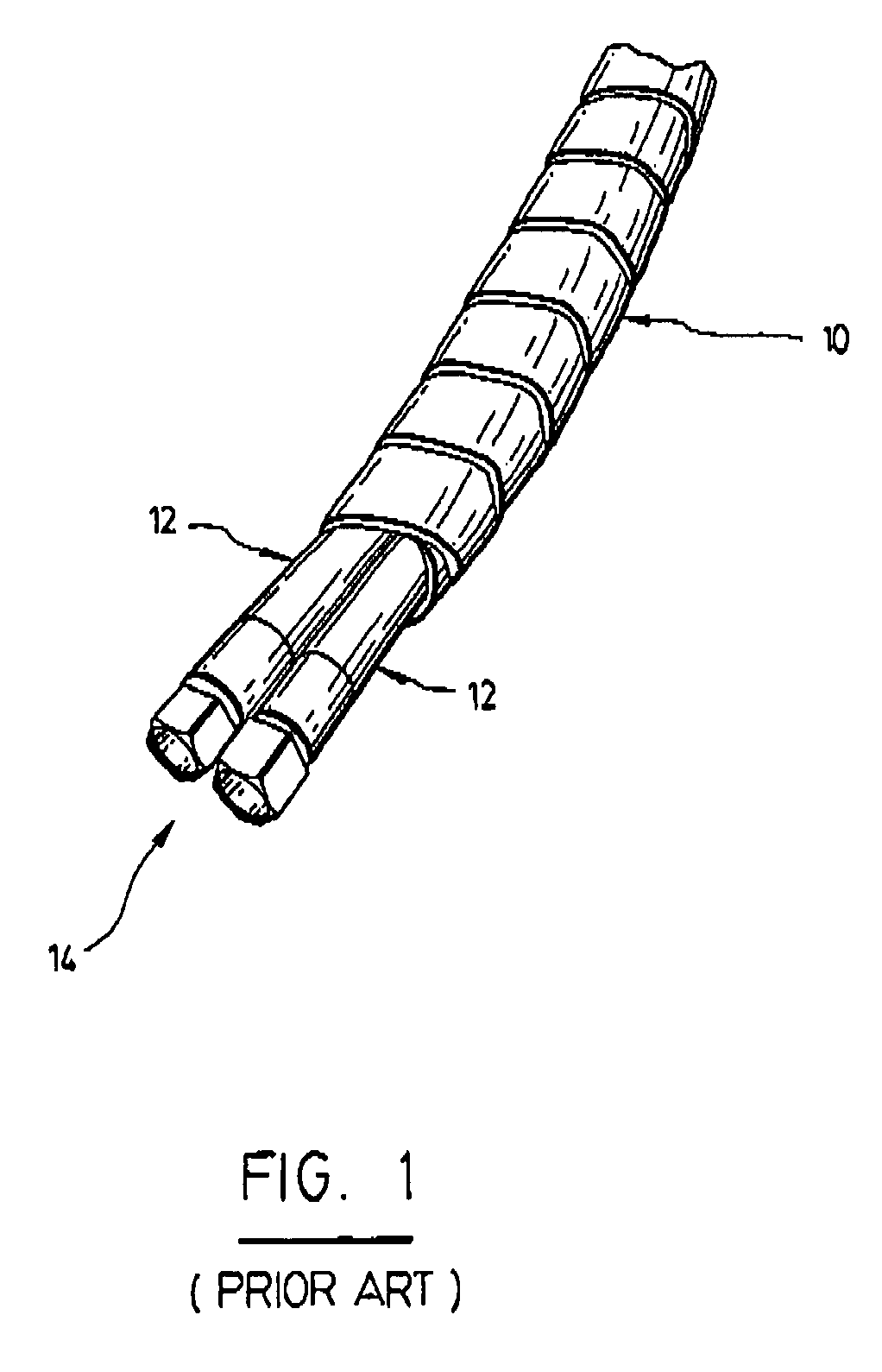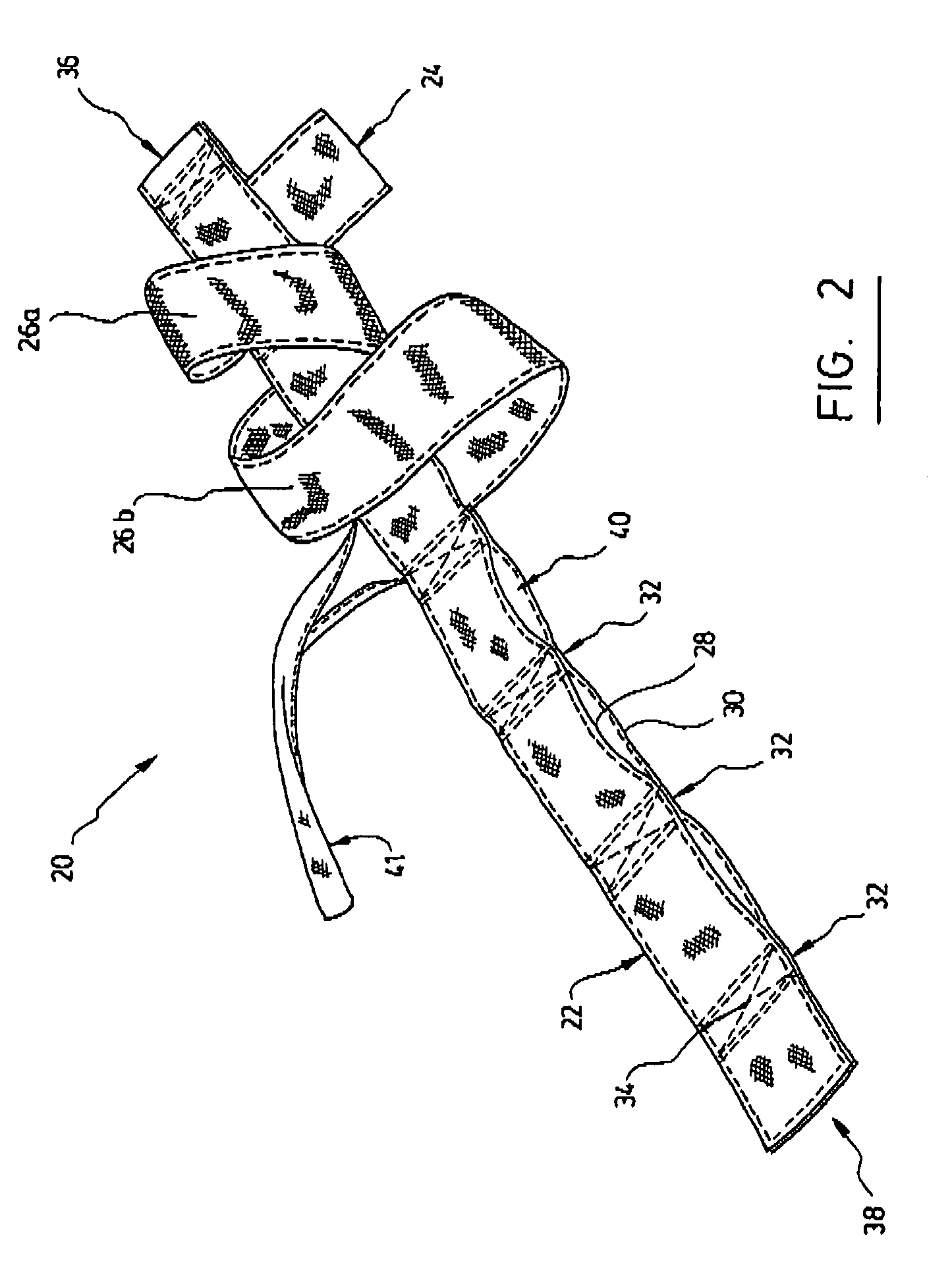Adjustable spiral sleeve for protecting lines
a spiral sleeve and line protection technology, applied in the industrial field, can solve the problems of equipment breakdown hazards, extreme and harsh surroundings of many industrial applications, and gruelling industrial environments, and achieve the effects of reducing the risk of equipment breakdown, reducing the risk of equipment damage, and reducing the safety of workers
- Summary
- Abstract
- Description
- Claims
- Application Information
AI Technical Summary
Benefits of technology
Problems solved by technology
Method used
Image
Examples
Embodiment Construction
[0051]The adjustable spiral sleeve according to the present invention, as well as the method of installing the same, may be used in a variety of industrial applications including but not limited to the forestry, mining, transportation, automotive, robotics, chemical, electricity, plumbing and sewage industries. The sleeve may be used to cover, protect and / or regroup various types of hoses, tubes, cables and pipes, which are employed for a variety of purposes.
[0052]The Adjustable Spiral Sleeve
[0053]FIGS. 2-6 shows the adjustable spiral sleeve (20) according to one embodiment of the present invention, which is used for covering at least one line. Of course, the adjustable sleeve (20) may be used in association with one or a plurality of lines of many sorts. Preferably, the adjustable spiral sleeve (20) is used to cover and regroup a plurality of lines. It should be understood that the term “lines” refers to hoses, tubes, pipes, cables, wires, channels or arteries of a variety of shape...
PUM
| Property | Measurement | Unit |
|---|---|---|
| longitudinal width | aaaaa | aaaaa |
| width | aaaaa | aaaaa |
| width | aaaaa | aaaaa |
Abstract
Description
Claims
Application Information
 Login to View More
Login to View More - R&D
- Intellectual Property
- Life Sciences
- Materials
- Tech Scout
- Unparalleled Data Quality
- Higher Quality Content
- 60% Fewer Hallucinations
Browse by: Latest US Patents, China's latest patents, Technical Efficacy Thesaurus, Application Domain, Technology Topic, Popular Technical Reports.
© 2025 PatSnap. All rights reserved.Legal|Privacy policy|Modern Slavery Act Transparency Statement|Sitemap|About US| Contact US: help@patsnap.com



